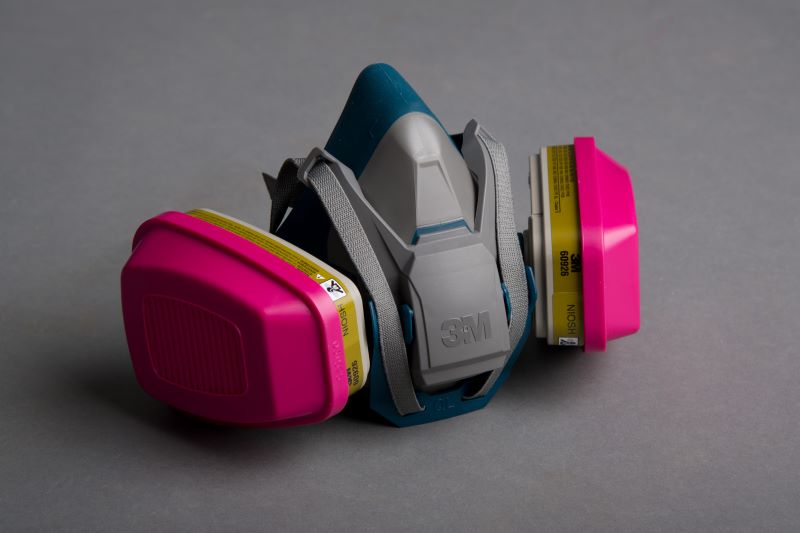Avian Influenza Menu
Respiratory Exposures
Working in affected poultry facilities involves exposures to dust, toxic gases and disinfecting chemicals, in addition to avian influenza virus. It is important to select respiratory protection for all of these exposures.
Appropriate respiratory protection for avian influenza and particulates (dusts) is a NIOSH-approved particulate filtering respirator. All NIOSH-approved filter classes are appropriate (N, R, or P class with 95, 99, or 99.97 percent efficiencies). The National Personal Protective Technology Laboratory (NPPTL) offers a variety of resources to help you identify NIOSH-approved PPE.


Hazardous gases and vapors are commonly found in poultry buildings. Ammonia levels may be high during manure and litter removal, building clean-out, and composting of carcasses and litter. Respiratory protection should include ammonia or multi gas cartridges approved for ammonia.
Cleaning and disinfecting compounds contain ingredients that can be harmful to breathing. These may include aldehydes, ammonia compounds, acids, alcohols, and other ingredients. Select a combination cartridge that includes both the appropriate gas component (from cleaning compound label) and particulate filters.
CAUTION: Effective ventilation and use of respirators with multi-gas cartridges and P100 filters are recommended when any of these gases and dusts may be present. A particulate filtering respirator with only an N95 or P100 filter or cartridge is effective for dust and viruses, but it does not protect against hazardous gases.
WARNING: Use cleaning and disinfecting products only as directed. Some cleaning or disinfecting compounds may react with ammonia in litter to produce hazardous gases. Mixing cleaning or disinfecting products together can produce toxic gases. Consult the product label or manufacturer for additional information.
Important Respirator Use Information
- You should consult a health care provider before wearing a respirator if you have a history of heart or lung disease.
- Respirators reduce exposure to airborne contaminants, but do not completely eliminate the risk of exposure, infection, illness, or death.
- Respirators should be used in accordance with manufacturer instructions.
- Information on respirator programs is available at Small Entity Compliance Guide for the Respiratory Protection Standard.
- Improperly fitted respirators do not provide the intended protection. Respirators should be fit tested when possible. A respirator seal check (fit check) should be performed each time a respirator is worn. Learn more about fit testing.
- A clean-shaven face should be maintained for the best fit and protection. A powered air purifying respirator (PAPR) with loose fitting face piece, hood or helmet can be worn by individuals with facial hair.
- If you experience respiratory symptoms (examples: shortness of breath, wheezing, cough, chest tightness) during or after working with poultry, contact your healthcare provider.
Get more information on respirator use in poultry facilities.
